 |
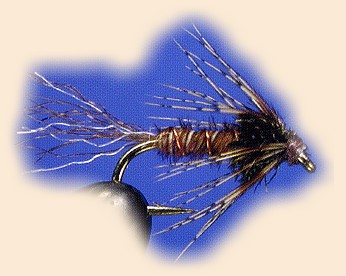 Pheasant Tail Flymph |
|
|
Materials for the Pheasant Tail Flymph:
Thread: Dark brown 8/0. Ribbing: Ultra–fine copper wire. Tail: Brown & white Z-lon. Abdomen: Four pheasant–tail fibers. Thorax: Two peacock herls. Hackle: Barbs from a brown partridge back feather.
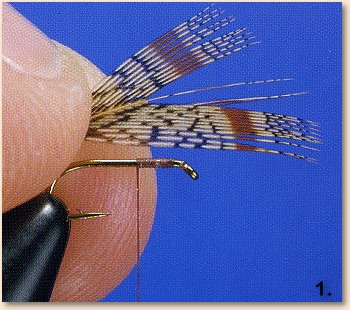 1. Start thread behind hook eye. Take a partridge feather and cut the stem out. Then holding the fibers aligned measure the length of the hook shank with them.
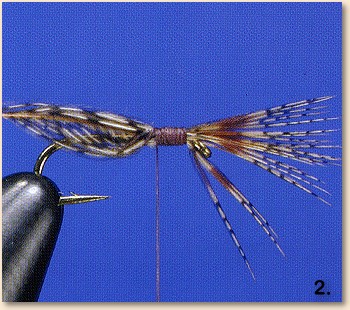 2. Push the barb butts over the hook eye and evenly distribute them around the hook shank. The tips of the barbs should extend out in front of the hook eye the same length of the hook shank. Make a soft loop wrap around them and then a second wrap to bind them to the shank.
 3. Wrap the thread up to just behind the hook eye leaving about two thread wraps of space between the barbs and the hook eye. Trim the feather stem. Wrap the thread back to the hook bend and attach the shuck, wire rib, and pheasant–tail barbs. Trim the shuck slightly shorter than the hook shank.
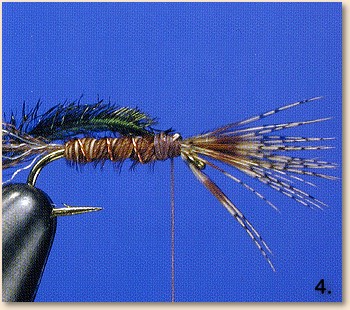 4. Advance the thread to the thorax tie–in point. Wrap the pheasant tail barbs up to the thorax and counter–wrap the wire rib then tie–in two peacock herls.
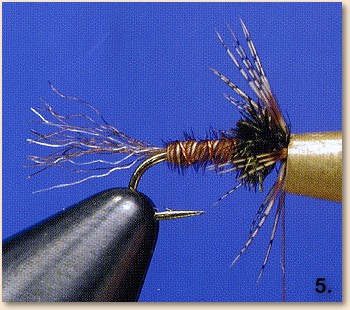 5. Make a couple of turns of herl to form the thorax. Then manipulate the thread in front of the hackle barbs. Push the hackle collar back using a bodkin and the sweeping the fibers back across the fly with your fingers. Hold it in place and make a few turn of thread tight against the barbs.
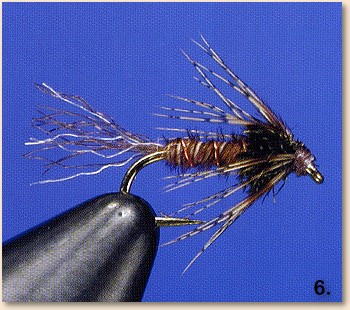 6. Build a neat head and whip finish or use two half hitches on small flies. Then apply head cement. ~ AM Credit: The Pheasant Tail Flymph is one of the many great variations of soft-hackle flies in his new book, Tying & Fishing Soft-Hackled Nymphs published by Frank Amato Publications. For more great flies, check out: Beginning Fly Tying, Intermediate Fly Tying and Advanced Fly Tying.
|